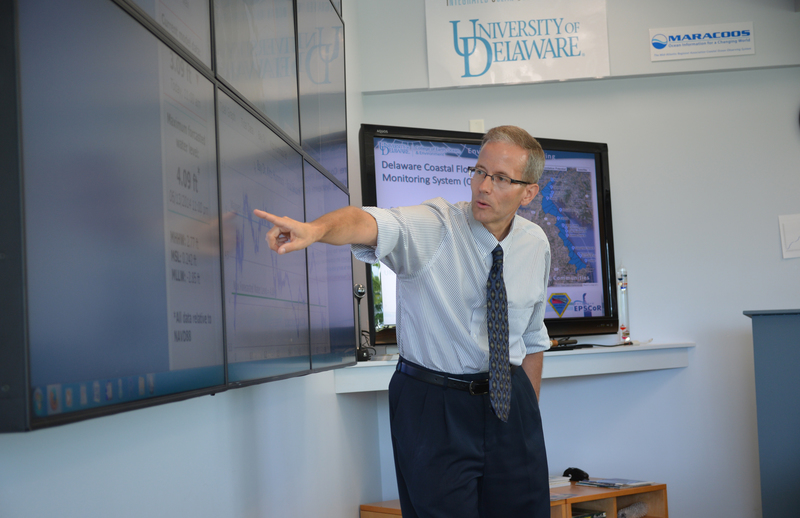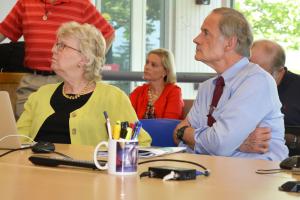UD joins new coastal resiliency institute

The University of Delaware's Sea Grant program will receive $1.65 million in renewed federal funding and has joined federal agencies and other universities in a new Mid-Atlantic Coastal Resiliency Institute.
University of Delaware officials announced June 13 that UD has joined seven other federal agencies and schools in the new institute, which will use the resources of participating institutions to address complex issues such as climate change and sea-level rise.
Federal agencies participating in the institute are NASA, U.S. Fish and Wildlife Service and the U.S. Geologic Survey. In addition to UD, the College of William and Mary, University of Virginia and University of Maryland are also participating.
The announcement of renewed funding and participation in the new institute were combined with a wide-ranging review of research at the college for U.S. Sen. Tom Carper, an advocate of Sea Grant funding.
Nancy Targett, dean of UD's College of Earth, Ocean and Environment in Lewes and director of the Sea Grant Program, said institute members have already expressed an interest in the college's digital flood-monitoring system, which provides real-time data on 15 coastal communities from New Castle to Lewes.
The system is updated every five minutes and can be accessed by the public at http://coastal-flood.udel.edu/. An I-Phone app is in the works, she said.
The college also monitors weather at 50 points throughout the state and snowfall at 27 stations. State transportation officials use the snow-monitoring system to deploy snow-removal equipment, and meteorological data is used by the U.S. Weather Service, she said.
Wide-ranging research at the college is aimed primarily at coastal resilience, outreach to homeowners, beach safety, water monitoring and support for recreational and commercial fishing. One program monitors migration patterns of the Atlantic sturgeon, a source of high-end caviar that once thrived in the area but is now a protected species.
The college is also investigating the impact of fertilizing phytoplankton with iron, which encourages its ability to absorb carbon dioxide from the atmosphere, possibly slowing global warming. When the plant dies it sinks to the deep ocean where the carbon dioxide can be trapped for thousands of years. But scientists don't yet know how this process works or what the future impact may be, so widespread implementation is controversial and currently on hold.
The college also advises residents and homeowners on flood prevention and protection through a toolkit with tips for minimizing flood damage and for getting the maximum aid from the Federal Emergency Management Agency in the event of a disaster. The guidance can also lower flood-insurance rates.
Jim Falk, associate director of Sea Grant said the most important contribution the college has made to Delaware's economy may be organizing and training a team of volunteer citizen scientists to monitor water quality. It is this group that provides water quality samples to the state database, earning five-star ratings for water quality in Rehoboth Beach and Dewey Beach.
“We're the only state which has that rating on two beaches,” Carper said. “And we only have 30 miles of coastline. You have no idea how many times I use that.”
The college has also spearheaded programs to foster beach safety by studying currents and waves that their effect on injuries. Still other programs promote safe seafood handling.
Find Sea Grant's toolkit at http://deseagrant.org/products/natural-hazard-and-climate-change-adaptat....























































